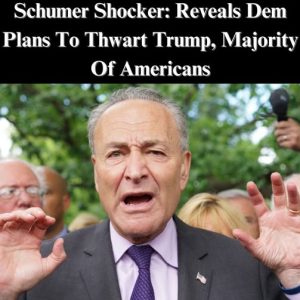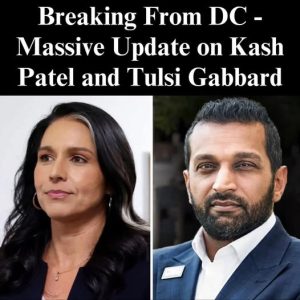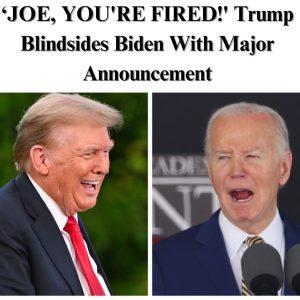In a series of high-stakes meetings on a tense Thursday evening, Vice President-elect J.D. Vance joined forces with House Speaker Mike Johnson and a select group of Republican lawmakers to address an imminent fiscal crisis. With the specter of a government shutdown looming large as the funding deadline approached on Friday, these leaders convened to deliberate over urgent measures to keep the government operational. The discussions underscored not only the severity of the budgetary challenges but also revealed deep partisan divides, with Vance openly criticizing Democrats for their role in the unfolding impasse.
In this comprehensive analysis, we explore the background of the fiscal deadlock, the dynamics of the high-level meetings, the challenges facing Republican leadership, and the potential pathways that could avert a shutdown. We also delve into the significance of Vice President-elect Vance’s involvement in these discussions and the broader implications for government operations and public confidence.
The Genesis of a Fiscal Crisis
A Bipartisan Effort Gone Awry
The roots of the current crisis can be traced back to a recent collapse of a proposed spending deal that aimed to extend government funding through mid-March 2025. Initially, the proposal emerged as a rare bipartisan effort, with the intention of including approximately $110 billion in disaster relief funding. However, the measure quickly became mired in controversy due to a series of policy riders that many critics decried as extraneous and wasteful.
Among the vocal detractors was none other than tech magnate Elon Musk, whose public opposition further amplified dissent within Republican ranks. The policy riders, which some argued were designed to serve special interests rather than address genuine fiscal needs, ultimately derailed the agreement. As a result, the House of Representatives was left without a consensus on funding, heightening the risk of a government shutdown and plunging fiscal policy into a state of uncertainty.
The Fallout of the Failed Deal
The failure of the spending bill sent shockwaves through Washington. With the deadline fast approaching, lawmakers on both sides of the aisle scrambled to reassess their positions and explore alternative solutions. The collapse not only highlighted the deep-seated divisions within the legislative branch but also set the stage for a more confrontational approach in the days that followed. Critics argued that the inability to forge a stable deal was indicative of a broader systemic problem—one where partisan brinksmanship threatened the very continuity of government services.
This backdrop of discord and fiscal instability provided the context for the subsequent meeting led by Vice President-elect J.D. Vance. As the crisis deepened, it became clear that a new strategy was needed—one that could bridge internal party differences while also appealing to a broader bipartisan consensus.
The High-Level Meeting: Strategy in the Face of Uncertainty
Convening the Leaders
Against this backdrop of uncertainty, Vice President-elect J.D. Vance stepped into the spotlight. Recognizing the gravity of the situation, Vance convened a strategic meeting with House Speaker Mike Johnson and a select group of senior Republican lawmakers. Although the details of the discussions have remained classified, insiders suggest that the meeting was marked by an urgent exchange of ideas and a shared commitment to avoiding a shutdown.
Vance’s presence at the meeting was significant. As someone who is set to join the executive branch, his involvement signaled that the incoming administration was taking a proactive stance on fiscal policy. Rather than waiting for a crisis to force their hand, these leaders chose to confront the problem head-on, discussing a range of potential solutions and identifying the key obstacles that needed to be overcome.
Key Topics of Discussion
The primary focus of the meeting was to devise strategies that could prevent the shutdown while staying true to conservative fiscal principles. Several critical topics dominated the conversation:
- Securing Party Unity: One of the foremost challenges was ensuring that the proposed funding measure had sufficient backing within the Republican caucus. The failure of the earlier spending bill revealed fractures within the party, with different factions holding varying opinions on what fiscal discipline should look like.
- Bipartisan Negotiation: Beyond intra-party concerns, there was also the practical need to craft legislation that could win bipartisan support in the Senate. Given the Senate’s composition and the potential for Democratic opposition, any viable plan had to be palatable enough to attract cross-party support.
- Streamlining Funding Provisions: Recognizing that one of the key factors behind the previous bill’s collapse was the inclusion of contentious policy riders, the leaders discussed the possibility of a “clean” funding measure. This approach would focus solely on providing the necessary government funding without attaching additional policy provisions that might derail the agreement.
- Contingency Planning: With the deadline fast approaching, the meeting also considered what contingency measures could be implemented in the event that a shutdown became inevitable. These plans would aim to minimize the disruption of essential government services and mitigate the negative impact on public confidence.
While the specific proposals discussed during the meeting remain under wraps, the fact that these issues were front and center speaks volumes about the complexity of the situation. The meeting was not merely about averting a shutdown for a day or two—it was about charting a sustainable fiscal path forward amidst intense partisan pressure.
Challenges Facing the Republican Leadership
Balancing Ideology with Practicality
One of the most daunting challenges for the Republican leadership lies in balancing strict fiscal conservatism with the practical necessities of governance. On one hand, many within the party are deeply committed to reducing government spending and eliminating what they view as fiscal waste. This ideological stance is a core component of their platform, and any deviation from it risks alienating their base.
On the other hand, the reality of government operations demands that certain expenditures—such as disaster aid and essential services—must be funded to avoid catastrophic consequences. Crafting legislation that satisfies both the ideological imperatives of fiscal austerity and the practical requirements of maintaining government functions is a delicate balancing act.
The Pressure of a Tight Deadline
The looming deadline to avert a government shutdown has added an extra layer of urgency to the situation. With time running out, lawmakers are under immense pressure to deliver a funding solution that is both timely and effective. This time constraint has forced many to consider measures that might otherwise have been set aside, such as temporary funding extensions or “clean” continuing resolutions that bypass contentious policy riders.
The pressure is not just internal. The public and various interest groups are watching closely, and any misstep could lead to severe political fallout. A shutdown would not only disrupt government services but also erode public trust in the ability of elected officials to manage the country’s finances responsibly.
Navigating External Influences
Adding to the complexity are the external influences that have shaped the debate. High-profile figures, including influential business leaders like Elon Musk, have weighed in on the issue, lending their voices to the growing chorus of dissent against the previous spending bill. Such endorsements have not only emboldened those within the Republican Party but have also raised the stakes for finding a solution that can withstand both internal and external scrutiny.
This external pressure has, in some ways, forced the leadership to reexamine its strategies. The need to maintain fiscal discipline while also addressing broader concerns about government efficiency has led to a reconsideration of traditional approaches to budgeting and spending.
Exploring Potential Pathways Forward
The Emergence of “Plan C”
In the wake of the failed spending deal, Speaker Mike Johnson has hinted at the development of a “Plan C”—a contingency strategy designed to avert a government shutdown. While details of this plan have not been made public, insiders speculate that it will involve a streamlined approach to funding, one that avoids the pitfalls of previous proposals by eliminating extraneous policy riders.
This “Plan C” is expected to focus on core fiscal necessities, ensuring that the government remains funded while also addressing key priorities such as disaster aid and essential services. The plan’s success will hinge on its ability to secure enough support within the Republican caucus and, crucially, to appeal to bipartisan sensibilities in the Senate.
Temporary Extensions and Continuing Resolutions
Another potential pathway under discussion involves the use of temporary funding extensions, or continuing resolutions (CRs), to keep the government operating while longer-term solutions are negotiated. This approach, though not ideal, is a common tactic in times of budgetary impasse. By extending funding for a limited period, lawmakers can buy themselves time to iron out the details of a more comprehensive agreement.
The challenge with a CR, however, is that it is inherently a stopgap measure. While it can prevent an immediate shutdown, it does not address the underlying issues that have led to the impasse. For many fiscal conservatives, a CR may be seen as a compromise that fails to uphold the principles of reduced spending and accountability.
A Clean Funding Measure
Perhaps the most promising solution emerging from the discussions is the prospect of a “clean” funding measure. This approach would strip away the controversial policy riders that have derailed previous proposals, focusing solely on providing the necessary government funding. By doing so, it aims to eliminate distractions and contentious debates, allowing lawmakers to concentrate on the essential task of keeping the government running.
A clean funding measure would also likely be more palatable to moderate Democrats in the Senate, who might be swayed by a straightforward, no-frills approach to budgeting. The challenge here is ensuring that such a measure still addresses all the critical funding needs without sacrificing fiscal discipline.
The Pivotal Role of Vice President-elect J.D. Vance
A Proactive Approach to Fiscal Policy
Vice President-elect J.D. Vance’s active participation in these discussions signals a proactive stance from the incoming administration on fiscal matters. His presence at the high-level meeting with Speaker Johnson and other Republican lawmakers underscores a clear message: the new leadership is committed to addressing the government shutdown threat head-on, with a strategic and collaborative approach.
Vance’s involvement is significant for several reasons. First, it demonstrates that the executive branch is not willing to leave fiscal policy solely in the hands of Congress. Instead, there is a concerted effort to ensure that both branches work together to navigate the complex landscape of government spending. Second, Vance’s reputation as a fiscal conservative who has spoken candidly about the need for efficiency and accountability lends credibility to the efforts being made to craft a viable funding solution.
Bridging the Executive and Legislative Divide
The current fiscal crisis is not just a legislative issue—it is a test of the relationship between the executive and legislative branches. By joining forces with House Speaker Mike Johnson and other Republican leaders, Vice President-elect Vance is helping to bridge the gap between the branches, fostering an environment of communication and joint problem-solving.
This collaboration is crucial in an era marked by partisan gridlock. The ability to forge a united front on fiscal matters will be essential for the incoming administration as it seeks to implement its broader policy agenda. In this context, Vance’s role is both symbolic and practical—signaling a commitment to a new era of cooperation while also actively contributing to the development of a sustainable funding strategy.
Implications for Government Operations and Public Confidence
The Stakes of a Government Shutdown
The consequences of a government shutdown extend far beyond the political arena. A shutdown disrupts essential services, affects federal employees, and can have a ripple effect on the economy. In the eyes of the public, a prolonged shutdown is a stark indicator of governmental dysfunction—a failure to manage the nation’s finances and uphold the responsibilities entrusted to elected officials.
For many Americans, the threat of a shutdown is deeply unsettling. It raises questions about the reliability of government institutions and the ability of leaders to put aside partisan differences in favor of pragmatic solutions. The discussions led by Vice President-elect Vance and Speaker Johnson are, therefore, not only about balancing budgets—they are about restoring public trust in the very idea of governance.
Setting a Precedent for Future Fiscal Policy
A successful resolution to the current impasse would have far-reaching implications. It would signal that even in times of deep division, leaders can come together to ensure the continuity of government operations. Moreover, it could set a precedent for how future administrations and Congresses approach fiscal challenges—emphasizing the need for streamlined, bipartisan solutions over contentious, ideologically driven proposals.
Conversely, failure to avert a shutdown could exacerbate public disillusionment with the political process, fueling further partisan divisions and undermining confidence in government institutions. The stakes, therefore, are incredibly high, and the outcomes of these deliberations will likely be studied and debated for years to come.
Economic and Social Ramifications
Beyond the immediate political consequences, a government shutdown can have significant economic ramifications. Disruptions in federal services can lead to delays in critical programs, affect consumer confidence, and even influence financial markets. For businesses that rely on government contracts or services, the uncertainty of a shutdown creates an environment of instability that can hinder economic growth.
Socially, the perception of governmental dysfunction can erode the sense of security that citizens rely on, especially during challenging times. In an era marked by rapid change and uncertainty, the ability of leaders to maintain steady, reliable governance is more important than ever. The collaborative efforts seen in these recent high-level meetings are therefore not just about avoiding a temporary lapse in funding—they are about safeguarding the social contract and ensuring that the government remains a pillar of stability and support for its citizens.
Looking Ahead: The Road to Resolution
Anticipated Developments and Legislative Moves
With the Friday deadline fast approaching, the coming hours are expected to be critical. Speaker Johnson’s mention of a “Plan C” suggests that the leadership is actively exploring all avenues to avoid a shutdown. While many of the details remain under wraps, insiders hint that the plan could involve a combination of temporary funding extensions and a clean funding measure that sidesteps the pitfalls of previous proposals.
The legislative process over the next few days will likely involve intense negotiations, both within the Republican caucus and with moderate Democrats in the Senate. Every stakeholder—from federal employees to advocacy groups—will be watching closely, knowing that the resolution of this crisis will set the tone for future budgetary debates.
The Role of Public Discourse and Media
In today’s interconnected world, public discourse and media coverage play a crucial role in shaping political outcomes. As news of these high-level discussions spreads, social media platforms and traditional news outlets will undoubtedly amplify every twist and turn of the unfolding saga. This heightened scrutiny can serve as both a catalyst for accountability and a source of additional pressure on lawmakers to deliver results.
The public’s reaction to the efforts led by Vice President-elect Vance and Speaker Johnson will be instrumental in determining the political fallout. If the collaborative approach is perceived as effective and transparent, it could bolster public confidence in the new administration. On the other hand, any missteps or delays could fuel further criticism and deepen partisan divides.
Reflections on a Defining Moment in Fiscal Policy
A Test of Leadership and Vision
The current fiscal impasse is more than a temporary challenge—it is a defining moment that will test the leadership and vision of those at the helm of government. The willingness of Vice President-elect J.D. Vance, Speaker Mike Johnson, and their colleagues to engage in candid, strategic discussions reflects a recognition that the nation’s future depends on their ability to overcome partisan deadlock and deliver practical solutions.
This moment of crisis offers an opportunity to reimagine the relationship between the executive and legislative branches—a chance to demonstrate that even in the midst of ideological differences, common ground can be found. For many within the Republican Party, this is not just about fiscal conservatism; it is about restoring a sense of purpose and accountability to the government.
The Broader Impact on American Governance
Should these efforts prove successful, the implications for American governance will be profound. A well-crafted, bipartisan funding measure would not only avert the immediate threat of a shutdown but also set a new standard for fiscal responsibility and collaboration. It would signal to the American people that their leaders are capable of rising above partisanship to secure the nation’s financial stability and ensure the continuity of essential services.
Moreover, the lessons learned from this crisis could inform future legislative battles. By demonstrating that a pragmatic, streamlined approach to funding can work, lawmakers may be more inclined to pursue similar strategies in the future, reducing the frequency and severity of shutdown threats.
Conclusion: The Path Forward Amid Fiscal Uncertainty
As the Friday deadline looms, all eyes remain fixed on the Republican leadership and the incoming administration. The strategic meeting convened by Vice President-elect J.D. Vance, along with Speaker Mike Johnson and key Republican lawmakers, represents a critical juncture in the nation’s fiscal policy. The challenges are immense, and the stakes could not be higher. However, the collaborative spirit evident in these discussions offers a glimmer of hope that even in an era marked by deep partisan divides, pragmatic solutions are possible.
The coming hours and days will be pivotal. Whether through a “Plan C,” temporary funding extensions, or a clean funding measure, the ability of the leadership to navigate this complex landscape will determine not only the immediate fate of government operations but also the long-term trust the American public places in its institutions.
In the end, the outcome of these deliberations will serve as a powerful reminder of the importance of leadership, vision, and a willingness to work together for the common good. It is a test of whether the principles of fiscal conservatism and government accountability can coexist with the practical needs of governing a nation. And for those of us watching, it is a moment that underscores the profound impact of effective leadership on the future of American democracy.
Key Takeaways
- A Critical Fiscal Impasse:
The collapse of a bipartisan spending deal, marred by contentious policy riders and external pressures, has heightened the risk of a government shutdown as the funding deadline approaches. - High-Level Strategic Discussions:
Vice President-elect J.D. Vance, alongside House Speaker Mike Johnson and key Republican lawmakers, has engaged in urgent meetings to chart a path forward, reflecting a proactive approach to resolving the crisis. - Balancing Ideology and Practicality:
The Republican leadership faces the dual challenge of upholding conservative fiscal principles while crafting legislation that can secure bipartisan support and prevent a shutdown. - Exploring Viable Solutions:
Potential pathways include a “Plan C” involving a streamlined funding measure, temporary continuing resolutions, and a clean funding bill free of extraneous policy riders. - Implications for Government and Public Trust:
The outcome of these negotiations will have far-reaching consequences, affecting government operations, public confidence, and the precedent for future fiscal policymaking. - A Test of Leadership:
The crisis is a defining moment for American leadership, testing the ability of the executive and legislative branches to work together in times of uncertainty and to restore stability to the nation’s fiscal affairs.
Final Thoughts
In these turbulent times, the unfolding fiscal crisis serves as a stark reminder that the governance of a nation is a delicate balancing act—one that requires not only ideological commitment but also the flexibility to adapt to practical realities. As Vice President-elect J.D. Vance, Speaker Mike Johnson, and their colleagues continue their efforts to avert a government shutdown, the American public watches with bated breath, hopeful that effective leadership will prevail.
The collaborative spirit displayed in these high-level discussions offers a beacon of hope amid political strife. It is a testament to the idea that, even in the face of deep partisan divisions, leaders can come together to find common ground and ensure the continuity of essential government functions. The coming hours will be crucial in setting the stage for a new era of fiscal policy—one that emphasizes efficiency, accountability, and, most importantly, the ability to serve the needs of the American people.
As we look to the future, let us hope that these efforts not only avert a temporary shutdown but also pave the way for a more stable and effective system of governance. In a time when the stakes are incredibly high, the promise of a unified, pragmatic approach to fiscal policy could very well be the key to restoring trust in our institutions and ensuring that the nation continues to move forward with confidence.





